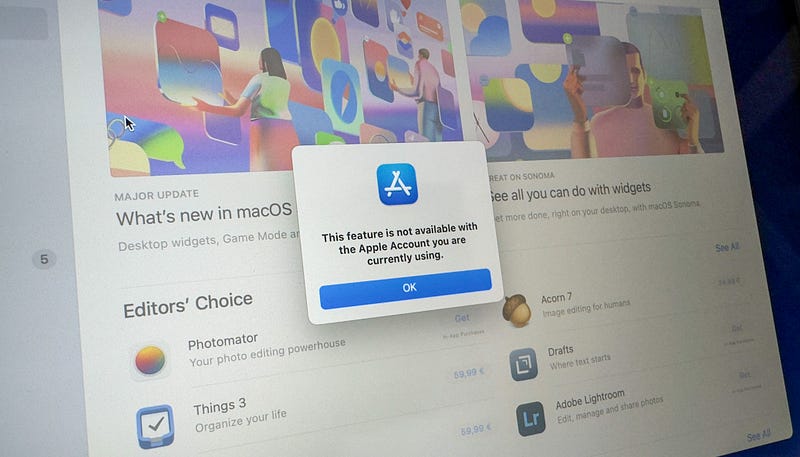Choosing Between MacBook and iPad Pro: A Thoughtful Decision
Written on
Chapter 1: Introduction
It’s well-known among my readers that I’m a strong proponent of using the iPad for daily tasks. The iPad Pro has been my go-to device for nearly everything. Recently, during a discussion with my company’s co-founders about which devices to acquire—iPad Pro or MacBook—we ultimately decided on MacBooks. Despite my advocacy for the iPad, I confidently recommended the MacBook.
In this article, I’ll elaborate on our thought process, the reasons behind our final choice, and the outcome of our decision.
Chapter 2: Device Comparison
When we evaluated options, we focused on the M3 MacBook Air, which strikes a balance among productivity, performance, and portability. Both the MacBook Air and the 13" iPad Pro share similarities in screen size, weight, and usability. Adding the Magic Keyboard enhances the iPad Pro's typing experience, but there are still notable differences to consider.
Section 2.1: Usability
Apple often touts the intuitive nature of iPad usage and iPadOS navigation; however, my experience tells a different story. Transitioning from a Mac to an iPad requires a learning curve, and one must genuinely want to use the iPad as a daily device. After four years of using iPads, I still find myself learning new features regularly.
Our team members, mostly new to Apple products, found switching from Windows to macOS much simpler than adapting to iPadOS. My initial experience with Apple began with the 2020 iPad Pro while still using a Windows laptop as my main device. Had I needed to rely solely on the iPad for work, I would have struggled immensely without extensive tutorials and practice.
Given my affection for the iPad, I had to be practical and advised against the iPad Pro due to usability issues.
Section 2.2: Operating System and App Constraints
It's a well-worn debate: macOS is a complete operating system, while iPadOS falls short. While iPadOS is sufficient for daily office tasks and offers conveniences like touch input and Apple Pencil support, app compatibility poses significant challenges.
In my experience, the Microsoft Office apps on iPad are rudimentary, missing essential features and often leading to compatibility headaches. Conversely, the Mac provides fully functional desktop applications that meet all work requirements. Additionally, we anticipated needing specialized software, including an ERP system, which would require local network access—something the iPad simply cannot provide reliably.
Thus, I found myself advocating for the Mac once more.
Section 2.3: Cost Considerations
We chose the M3 MacBook Air with 512 GB storage and 16 GB of unified memory, totaling around 1579€ (1741 USD) per device, taxes included.
To illustrate the financial differences, here’s a breakdown for the iPad Pro:
- 13” M4 iPad Pro with 512 GB storage and Wi-Fi: 1659€ (1829 USD)
- Magic Keyboard for 13” iPad Pro: 389€ (429 USD)
- Apple Pencil Pro: 149€ (164 USD)
This amounts to a staggering 2197€ (2422 USD) per device—significantly more than our chosen MacBook Air, even for the base configuration of the iPad Pro.
Section 2.4: Managed Apple ID Implications

Image courtesy of the author.
We hadn’t fully considered how a managed Apple ID would impact our choice. With a managed Apple ID, accessing the App Store is restricted, complicating the app installation process. Conversely, downloading Mac apps via a browser is seamless. Setting up an iPad under these constraints could prove to be more complicated than configuring a Mac.
Chapter 3: Final Thoughts
Was the decision to choose MacBooks the right one? Absolutely.
For efficient business operations, taking the safer option is crucial. Our team members adapted well to macOS and began working without significant hurdles. As we prepare to implement our ERP system, we confirmed its full compatibility with macOS, allowing us to install all necessary interfaces. Plus, we can connect dual 27” monitors for enhanced ergonomics.
One notable downside of the iPad is the lack of support for Mac applications.
While I’m not advocating for macOS to run on the iPad, I do wish for the availability of full-featured Mac applications on the iPad. The iPad Pro, powered by Apple's advanced M4 chip, has the potential to support such applications. If this were the case, my recommendation might have favored the iPad Pro instead.
Do you utilize Apple devices in your business? How did you reach your conclusion—MacBook or iPad? Share your experiences in the comments!
Thank you for reading! Tobias
The video “Is Siri Destined to be Dumb?” explores the limitations and potential of Siri as a digital assistant, raising questions about its future in the tech landscape.